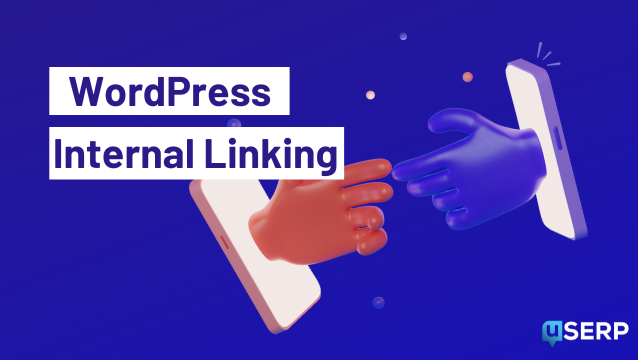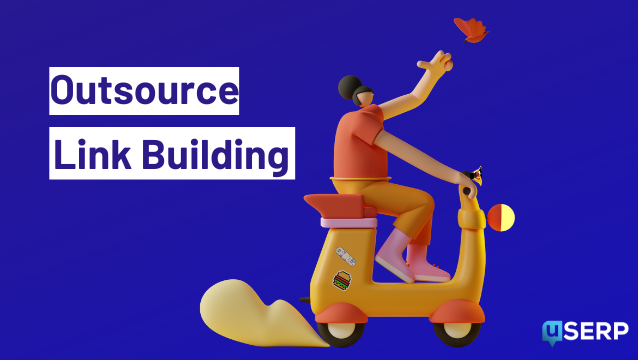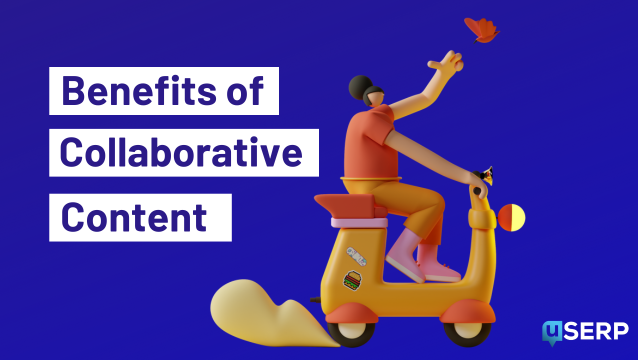The digital landscape evolves as technology advances and search engines update their algorithms. Search engines are often the first place internet users will turn to pull up desired information.
Therefore, businesses and individuals must cater their content to SEO best practices for their products to pop up at the top of a search engine results page (SERP). Organic SEO is the key to generating more views for your content.
This article will define organic SEO, how to optimize your content, and why it’s essential.
What is organic SEO?
Organic SEO (Search Engine Optimization) is a strategy to increase a website’s visibility in search engine results. It’s called “organic” when a business or individual doesn’t pay to increase its placement on a SERP. Conversely, paid SEO is often generated through Google Ads and is most often used for quick results.
However, this strategy will only work sometimes, depending on a company’s budget, as it can be costly over time. This type of SEO will generate traffic by buying its placement at the top of the SERP, labeled “ad” or “sponsored”.
In contrast, organic SEO might yield slower results, but it is a long-term effective strategy. It’ll generate traffic using three main SEO strategies: on-page, off-page, and technical optimizations.
- On-page SEO: This is about altering content directly on a website to increase its SERP rankings. On-page SEO focuses on elements such as titles, keywords, and URL structure.
- Off-page SEO: Refers to optimizing content off of a website. This includes link-building, user reviews, and having other companies mention your business on their websites.
- Technical SEO: Involves structuring your website in alignment with search engine scanning mechanisms to pull up your data, including information architecture, responsive layouts for both mobile and web, and server response times.
Why is organic SEO important?
The main reason organic SEO is so important is to increase the visibility of your website. Without showing up on search engines, finding new users and, thus, revenue for your business is challenging.
Using organic SEO strategies is a long-term approach, as it is cost-effective. Although strengthening your website’s organic SEO is costly in the beginning regarding time and effort, it is a sustainable strategy that maintains your website’s rankings with little maintenance over time.
According to research, users see websites that generate closer to the top of a SERP without saying “ad” or “sponsored” as more trustworthy. This helps increase traffic as users often click one of the first few results rather than scrolling down a page or through multiple pages.
Applying organic SEO strategies will give you an edge over the competition by putting your website above the rest (literally and figuratively). As a result, your page will be more likely to generate high conversion and engagement rates.
The key components of organic SEO
Organic SEO includes five main components: keywords, content, backlinks, social media, and user experience.
Keywords
A search engine can pull up your website on its SERP based on how many words it has in its algorithm that match your content. The more relevant keywords on your website, the higher the SEO score it’ll receive and appear closer to the top of the results.
Keywords are the foundational elements that search engines use to match a user with the information they are looking for and indicate the content you have on your website. Thus, keywords are extremely important to incorporate to increase search visibility.
Content
Search engines determine how relevant your website’s content is to a potential user and, thus, only pull up results they consider suitable for your user. It’s important to optimize your content’s quality, as a user will be more satisfied to see well-researched and well-thought-out information. If they are happy with the content they receive, they’ll likely return and increase your business’s conversion rate.
Backlinks
Backlinking is a hyperlinking from an external website to your own. This is a hugely important SEO strategy, as backlinks build trust for your website based on search engine algorithms. The higher the amount of backlinking to your website, the more credible the website is.
Credibility leads to search engines bringing your website closer to the top of a SERP. Another reason backlinking is important is to generate traffic from external websites straight to yours, therefore gathering “referral traffic.”
Social Media
Social media doesn’t directly increase your organic SEO rankings, but it’s still essential in reaching a broader audience and driving higher engagement on your website.
Getting as many eyes on your content as possible is always helpful. Generating reposts, likes, and comments on your pages is even better than getting more views. That’s why it’s so important to generate quality content.
User experience (UX)
Enhancing your website’s UX promotes user satisfaction and can improve your search engine rankings. Take advantage of using UX and SEO in conjunction to maximize your website’s content.
For example, you can improve your website’s navigation by conducting user research on usability testing platforms. Make sure your website is mobile-optimized and responsive. Optimizations like lazy loading and caching can also decrease your website’s loading time.
Optimize content by formatting headings and subheadings using H2s and H3s and use bullet and number lists whenever possible to break up walls of text.
Increase user engagement by bringing as much value as possible. Also, consider using interactive content, including videos, quizzes, polls, and more, to really tap into your audience’s pain points.
Top 5 best practices for organic SEO
Keyword research and optimization
The number of keywords matching a search engine’s algorithm will increase your SEO rankings and put your website closer to the top of the page.
One way to figure out which keywords you should integrate into your website’s content is by using one of the following helpful keyword research tools: Google Keyword Planner, Ahrefs, SEMrush, AnswerThePublic, Shine Ranker, and Moz’s Keyword Explorer.
Each tool has different pros and cons, price points, and insights. For example, AnswerThePublic shows you real search queries from users targeting the keywords you select. This allows you to tailor your content and answer the questions your customers ask.
If you decide to use one of these online tools, the next step is figuring out the hierarchy of the keywords you’ll use. There are several scores that these tools will generate, so it’s important to learn some of the ways to use them to your advantage.
One way is to analyze the difficulty score of a keyword. Some people believe it’s best to target “low-hanging fruit” first, meaning using easier words to rank first. However, using a mix of high- and low-difficulty keywords to create balance in your content is helpful.
Another characteristic to look into is search volume. Low search volume scores can mean there’s not a high search demand for the keyword. Additionally, analyzing what keywords are missing from your competitors’ websites can allow you to get ahead by filling in the missing pieces.
In addition to tools for keyword research, there are always tools that can help you optimize keywords. Those include Frase, Surfer, Clearscope, MarketMuse, and Page Optimizer Pro.
Keyword optimization tools can provide detailed recommendations on how to structure the content on your website. These recommendations can give details for on-page optimizations about where to embed keywords, such as in a header, title, subheader, intro, conclusion, etc. They can also provide other recommendations, such as adding meta tags and optimizing image SEO.
Quality content creation
“Quality content” is often determined by the acronym E.E.A.T.: experience, expertise, authoritativeness, and trustworthiness. Ensuring your website masters the three areas of E.E.A.T. is extremely important because it can not only help your visibility and organic traffic increase but can also negatively impact your position on a SERP if it doesn’t meet this criterion.
For example, if Google flags your website as untrustworthy, it might not display it on the results page. Some tips for creating quality content include conducting keyword research and optimization. Creating SEO-optimized content outlines, proofreading and editing your content, optimizing for mobile, and understanding your target audience.
Building high-quality backlinks
Backlinks are extremely important in acquiring referral traffic. They bring over users from external websites who may not have searched for your product independently. Multiple backlinks also indicate to Google’s algorithm that your website has high authoritativeness.
The Do’s and Don’ts of building backlinks are below:
- Do: guest columns, requesting a link, broken link building, and blogger outreach.
- Don’t: skip backlinking, link to unedited or low-quality content. Buy links and sacrifice quantity for quality.
Below are some tips for acquiring high-quality backlinks:
- Build relationships with those who have an influential media presence (bloggers, influencers, etc.)
- Reach out to companies you want to feature your content and have a proposal ready for how you can benefit their website
- Create exciting and aesthetically pleasing infographics and images that people can embed into external websites
Social media engagement
Though social media engagement doesn’t directly affect your SEO ranking, it’s extremely helpful in increasing your content visibility. The more engagement you receive on social media, the higher the volume of traffic you’ll generate. Having others reshare, like, and comment on your content is helpful.
Social media also allows you to interact and receive direct feedback from your users. Tools like Hootsuite and SproutSocial can help you use social media to market your business’s content (both offer free trials).
The Do’s and Don’ts of social media engagement are below:
- Do’s: Interact with your user base. Add images or infographics to your posts for eye-catching content. Post interactive material to increase engagement. Make sure each of your posts is valuable and high-quality.
- Don’ts: Post excessively (think quality over quantity). Avoid negative comments. Post “clickbait” material. Be inauthentic. Forget to build relationships and maintain connections with other brands and influencers.
Tips for enhancing social media engagement:
- Respond to comments and listen to your customers and potential customers – whether positive or negative!
- Try posting polls, surveys, or questionnaires that encourage responses
- Post about current events or trending conversation topics at the moment to increase active engagement
Improving user experience
Ensuring your content has excellent user experiences is crucial for improving your SEO score. Often, the longer a user stays on your page and engages, the higher their satisfaction with your website.
Google aims to pull up relevant search results on their page and those with high overall user satisfaction. Google’s algorithm analyzes several factors, including UX elements, to determine what pages they pull up on their SERPs.
For example, Google’s algorithm assesses how easily a user can navigate through the main content of your page. Additionally, it analyzes factors such as mobile-friendliness, accessibility, and usability in its SEO rankings.
Tips for optimizing user experience:
- Take the time to understand your user base and provide them with relevant content to meet their wants/needs
- Conduct user research (you can use a user research tool like UXtweak) to improve the information architecture of your website for easy navigation
- Make sure your website design is responsive for both mobile and web formats
Measuring organic SEO success
Tools for tracking organic SEO progress
- Free SEO tools: Google Analytics, SERPs.com, Bing Webmaster Tools
- Freemium tools: Ubersuggest, SEOptimer, SEMrush, Ahrefs
- Paid tools: SproutSocial, Moz Pro, Serpstat
Key performance indicators for organic SEO
- Organic traffic – how many users are finding your website through SERPs
- Keyword rankings – how many keywords you use to match relevance for a search result
- Bounce rate – how many users are leaving your website quickly after only looking at one screen
- Conversion rate – how many users carry out your desired action
- Backlinking – how many external websites are linking to your page
Conclusion
Improving your website’s organic SEO can be key to accomplishing your business goals.
Some ways to improve your rankings include adding more relevant keywords to your content, improving the user experience of your website, and building connections with industry peers who’ll backlink to your content.
Building your organic SEO strategy is a dynamic process that requires continuous testing and refinement. As algorithms change, so must you.
Technological advancements and new tools help maintain visibility, build trustworthiness, and create long-term success for your digital brand presence.
Don’t delay. Start your organic SEO optimization today.
- What is Organic SEO? Best Practices for Organic Search - November 13, 2023









